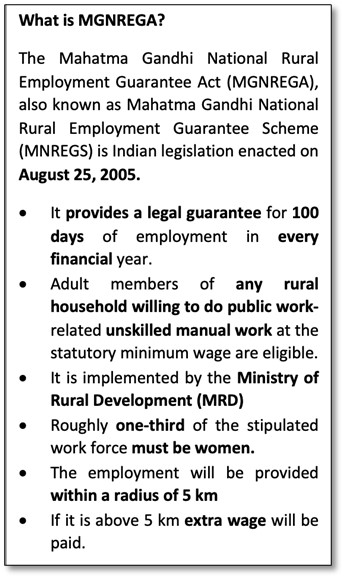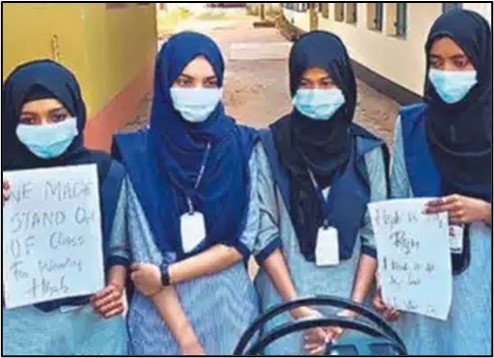Tuesday, 15th February 2022
Maternity Benefit Scheme
In News
The government has recently announced that the maternity benefit programme will be extended to cover the second child only if it is a girl.
Concerns raised against the scheme
- To provide maternity benefit only to the mother of the first-born is illegal as the National Food Security Act, 2013.
- NFSA 2013, lays down that every pregnant woman and lactating mother are entitled to it.
- Incentives are proposed to be given only in case of birth of girl child is further challenging.
- The announcement implies that women will be able to access the scheme only after the delivery, will not have any impact on their nutritional uptake during the course of their pregnancy.

The PMMVY scheme
- PMMVY is a Maternity Benefit Programme launched in 2017 with the objective of providing partial compensation for the wage loss in terms of cash incentive to women so that the woman can take adequate rest before and after delivery of the first living child.
- It provides ₹5,000 for the birth of the first child to improve the nutritional well-being of both the mother and the child. It is combined with Janani Suraksha Yojana, under which ₹1,000 is given for an institutional birth. Thus, a woman gets a total of ₹6,000.
- The cash incentive provided would lead to improved health seeking behaviour amongst the Pregnant Women and Lactating Mothers (PW& LM).
- This programme is implemented in all the districts of the country in accordance with the provision of the National Food Security Act, 2013.
- Under the revamped PMMVY under Mission Shakti, the maternity benefit amounting to ₹6000 is also to be provided for the second child, but only if the second is a girl child, to discourage pre-birth sex selection and promote the girl child.
Source:
Image source:
One Ocean Summit
In News
The PM of India has reiterated India’s commitment to Eliminating Single Use Plastic at the high-level session of the One Ocean Summit, which is being hosted by France.
About the One Ocean Summit
- ‘One Planet Summit dedicated to the ocean’ or the ‘One Ocean Summit’ has been organised to mobilise the international community and take tangible action to mitigate pressures on the ocean.
- The 27 EU states and 16 others agreed to pursue a global agreement by the end of the year to regulate the sustainable use of the high seas and preserve their biodiversity.
- 30 more countries also signed up to the so-called 30x30 coalition, which was launched in January 2021 and aims to protect 30% of the world’s land and sea by 2030.
- The USA would support opening talks at the UN for an international deal on plastic pollution, throwing its weight behind the EU27 and about 10 other countries.
- Various European Bank led “clean oceans initiative” has aimed to reduce the 9m tonnes of plastic that end up in the ocean each year, pledging €4bn of finance by 2025.
- Half a dozen more countries joined a “plastics economy global commitment” backed by the UN environment programme to help governments and businesses transition to a circular economy aimed at recycling or reusing 100% of all plastics.
- France and Columbia announced a global “blue carbon” coalition to help finance the restoration of coastal ecosystems such as salt marshes, seagrass beds and mangroves that are capable of absorbing and storing large quantities of carbon.

Commitments made by India
- India's ''Indo-Pacific Oceans Initiative'' contains marine resources as a key pillar.
- India also supports the French initiative of a ''High Ambition Coalition on Biodiversity Beyond National Jurisdiction."
- India is committed to eliminating single-use plastic.
- India recently undertook a nationwide awareness campaign to clean plastic and other waste from coastal areas. Three hundred thousand young people collected almost 13 tons of plastic waste.
- Navy contributed 100 ship-days this year to clean plastic waste from the seas.
- India will join France in launching a global initiative on single-use plastics.

Sources:
Uttarakhand's Uniform Civil Code Proposal
In News
The government of Uttarakhand has proposed implementation of the Uniform Civil Code in the state.
What is Uniform Civil Code (UCC)?
The Uniform Civil Code (UCC) calls for the formulation of one law for India, which would be applicable to all religious communities in matters such as marriage, divorce, inheritance, adoption. The code comes under Article 44 of the Constitution, which lays down that the state shall endeavour to secure a Uniform Civil Code for the citizens throughout the territory of India.
What are the major issues with UCC?
- Need for clarity on Article 44:
- State’s mandate: As per Constitution, state shall endeavour to secure for citizens a uniform civil code throughout the territory of India.
- Question of ‘state’: The definition of ‘State’, as given in Article 12, includes the government and Parliament of India and the government and the legislature of each of the states and all local or other authorities within the territory of India or under the control of the Government of India. If state means state government or local or other authorities, does it mean states or local authorities can make a uniform civil code for the whole of India.
- Defining uniform: The Constitution’s framers used the term “uniform” in Article 44 and not “common”, because “common” means “one and the same in all circumstances”, while “uniform” means “the same in similar conditions”.
- Defining civil: It means matters where personal rights (not public rights) are in question —such as a contract, or sale and purchase of goods/services or properties.
- Defining Code: “code” does not necessarily mean one single law in every circumstance. It may mean either one enactment such as Indian Penal Code, or the Hindu Code Bill that includes three different Acts.
- Need for clarity: While Article 44 uses the phrase “state shall endeavour”, other Articles in the ‘Directive Principles’ use expressions such as “in particular strive”; “shall take steps”; “shall promote with special care”; “shall in particular direct its policy”; “shall regard its primary duty”; “shall be obligation of the state” etc.
- Duty of court: Diversity in expected roles of state makes it duty of the court to define the various directive principles under the constitution. For example, while Article 43 mentions that the “state shall endeavour by suitable legislation”, the phrase “by suitable legislation” is absent in Article 44, which indicates that the framers did not intend enactment of uniform civil code by a single legislation.
- Diversity in personal law:
- Power to legislate: Under the Constitution, the power to legislate in respect of personal laws rests with both Parliament and state Assemblies. Thus, India has different personal laws from state to state. Once a legislative field is occupied by parliamentary legislation, states do not have much freedom to enact laws. Such laws would require Presidential assent under Article 254.
- Diversity in customary: Marriage among close relatives is prohibited in the north but considered auspicious in the south. Lack of uniformity in personal laws is also true of Muslims and Christians. The Constitution itself protects local customs of Nagaland, Meghalaya and Mizoram.
- Questionable efficiency: Reforms in Hindu law have not completely removed gender Besides, the amount of land actually inherited by Hindu women is a small fraction of what they are entitled to under reformed Hindu law. Even when they inherit land, it is invariably much less than an equal share. The power of will is used to give the entire property to sons.
Sources:
Guru Ravidas Jayanti
On February 16, Guru Ravidas Jayanti will be celebrated this year i.e. 2022. Guru Ravidas Jayanti is marked to celebrate the birth of Guru Ravidas, a Bhakti movement saint during the 15th to 16th century. Guru Ravidas is said to have written several hymns and some of them were embraced by Sikhism's holy book, the Guru Granth Sahib. The saint-poet worked religiously towards reforming the society and removing biases of the caste system. The day is celebrated mostly in north India, including Punjab, Himachal Pradesh, Haryana and Chandigarh. The exact date of the birth of Guru Ravidas is not known but it is widely believed that he was born in 1377 C.E in Varanasi, Uttar Pradesh. Guru Ravidas advocated for equality and dignity for all, irrespective of their caste. He promoted gender parity and opposed the division of society based on gender or caste. Some say he was also the spiritual guide of another prominent Bhakti movement poet -- Meera Bai.

Source:
Women and Migration
In News
Covid-induced disruptions impacted migrant women and children, who are often overlooked when it comes to policy-implementation.
What is Migration?
Migration, one of the three basic components of population growth of any area, plays an important role in improving the economic and social conditions of people. The Indian Constitution provides its people the basic freedom to move to any part of the country, and the right to reside and earn a livelihood of their choice. Several economic, social, cultural, political factors influence the decision to move. An analysis of the migration pattern helps understand the changes taking place in people's movements within the country and is the most volatile component of population growth.
Trends in Migration of Women in India
- Of the 45 crore migrants that the 2011 Census records, 31 crores are women, which means 67% of the migrants are women.
- There are about 21 crore marriage migrants. While women who migrate with their family are roughly about 11% of all women migrants.
- Women who are solo work migrants are roughly about 3%.
- But the biggest group for which we have virtually no statistics, and very poor statistics are women whose husbands migrate for work.
- Internal female migrants in India are young. Their educational attainment is generally very poor.
Factors affecting Female Migration
- Marriage: Marriage remains the top-most reason of female migration. As many as 21 crore women in India migrated for marriage, as per the 2011 census. Around 70 percent women migrate because of marriage.
- Employment: Since rural areas face the problem of lack better employment opportunities in the villages, they migrate to urban areas where they expect to get productive employment. But around 80% of migrated eligible female graduates choose not to participate in the organized workforce.
- Education: Education can also affect women’s migration pattern, as it does with men. It has been widely observed that propensity to migrate increases with education. Increased education seems to encourage more migration of women.
- Pull Factors: Better income (67%) and better work opportunities (60%) were the most frequently reported pull factors, followed by having well-settled relatives in Delhi/Mumbai (29.7%) and family movement (17.9%).
- Push Factors: Under Push factors, the most frequently cited reason to migrate was ‘no money in the household’ (54.2%), followed by dissatisfaction with work they did at home (43.6%), and lack of employment in their home districts (15%). Political instability and environmental conditions such as droughts/floods or debt at home were infrequently reported.
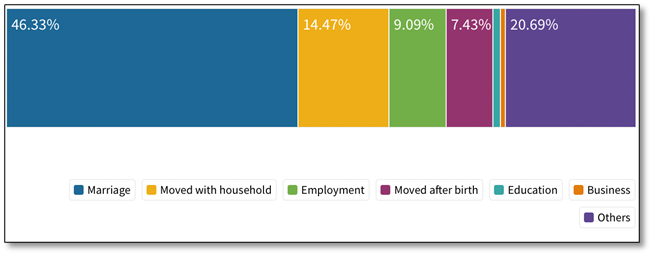
Problems/ Vulnerabilities of Migrating Women
- Due to invisibility of women and children, in general, migrant women become even more vulnerable. Also, there is a severe lack of awareness about what kind of programmes are available for them when they’re migrating and there are certain schemes.
- This keeps women out particularly from Anganwadi services and PDS. So, the universality of the services lose meaning if there is no portability attached to them.
- Migration due to marriage also results in an increase in domestic crimes against women, since most of the women migrating from rural areas are illiterate and have no one to share their concerns.
- Daughters married in some other villages find it very difficult to attain land right and inheritance rights for women.
- Financial Woes: Women migrants have no identity as workers, which means that they do not have access to healthcare or work during the lockdowns. Migration also comes out to be a reason why women at most times, drop out of the workforce.
- Also, financial inclusion of migrant women is needed on a large scale, especially related to bank account opening, which is linked with various social protection programmes.
- Pandemic Distress: Due to lack of accessibility of the Ration card during the Pandemic, food crisis emerged. As this card is not transferable, migrants could not get access to the food. Even the government food distribution needed online registration, lack of mobile phone or bank accounts not linked to numbers, further restricted food access.
- Health Issues: Migrant workers live and work in very unhygienic conditions and makeshift shelters at work sites becomes their homes. Women migrants are vulnerable to sexual assault at these sites.
- It was also noticed that active outreach facilities or the services by health workers are lacking at the migrant areas in cities specially to identify and include the pregnant or lactating women and children in the mainstream programmes.
- As Sexual Harassment at Workplace Act does include informal workers, it makes migrant women vulnerable to sexual harassment at work sites.
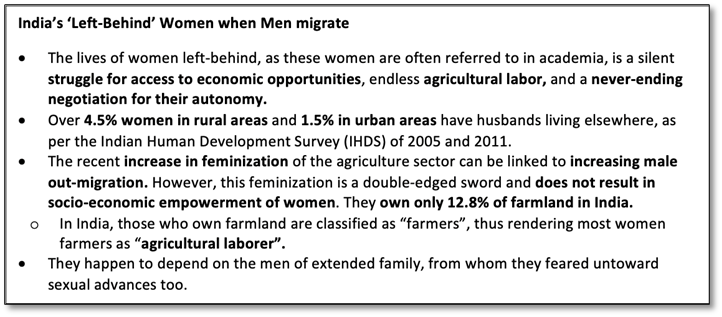
What can be done mitigate/ reduce the vulnerabilities?
- Female migrants are hugely heterogeneous group as there are women who are migrating from one village to another because of marriage or for work with family. There is need to specially design programmes and ensure that migrant women are included in the design.
- Looking at the fact that migrant females are denied certain rights just because they have shifted location for whatever reason, government need to work out decentralized policies.
- Sexual Harassment at Workplace Act can be set up also with the help of civil society, especially in places where women work at the worksite.
- Creating enabling environment for potential female migrants. Migration information and support centres in high out-migration districts and high in-migration destination sites could be established to support and facilitate independent migration for women.
- Ensuring adequate representation of women in the implementation of National Rural Employment Guaranty Scheme (NREGS) and linking it to skill development to improve income generation activities in their home districts would serve to reduce the need to migrate.
- Improving awareness of social protection schemes and financial entitlements in migrant settlements would improve access to these services.
- Improving awareness of the availability of low-cost public health care services and introducing behavior change interventions directed at disease prevention would benefit both the migrant and the larger community in low-income high-density neighbourhoods.
- Individual and community level interventions such as individual/couple counselling and referral to appropriate physical and mental health and legal services would address spousal abuse among migrants and the general community.
Conclusion: Migration is a social a phenomenon which is influenced by both underdevelopment as well as development. Female migration in India is an area which needs further exploration and research to understand it better. Although, most of the female migration in India is due to family reasons like marriage and family moved, still a significant proportion of women are migrating to mega cities for economic reasons like employment, business and education. With modernization, development and increasing autonomy of women, it is expected that the volume and rate of female migration would increase in future mostly for economic reasons. As of now, as most of the female migrants which are moving to cities are either illiterate or semi-literate, there is need for migration policies which focuses on the empowerment and development of women in terms of education and income. Female education is the key for empowerment of women in terms of making the decision to migrate as well as getting a better job at the destination.
Question: Discuss the various reasons for female migration in India and how it leads to various vulnerabilities in female migrants.
Sources:
- ‘Women are the original migrants; they have to migrate to a new family after marriage’:
- ‘Protect their rights, remove policy blindspots’:
- Female Migration in India:
- FEMALE MIGRANTS IN INDIA:
- What is the biggest reason for migration in India?:
- Most Common Reason For Migration Among Indian Women: Marriage:
- “No One Knows About Me.” India’s ‘Left-Behind’ Women:
- FEMALE MIGRATION TO MEGA CITIES AND DEVELOPMENT IN INDIA:
EOS-04
This is image of ISRO’s Polar Satellite Launch Vehicle PSLV-C52 carrying Earth Observation Satellite EOS-04, which was launched on February 14, 2022. This was the India’s first mission this year, in fact, it was the first mission since the failure of the GSLV F10 mission in August 2021. The 1,700kg EOS-04 is a radar imaging satellite capable of providing high-quality images under all weather conditions. It can be used to capture images for agriculture, forestry, flood mapping, soil moisture and hydrology. The satellite has a mission life of 10 years. The spacecraft also carried the INS-2DT technology demonstrator satellite, which has a thermal imaging camera and can help in the assessment of land and water surface temperatures apart from mapping vegetation. The third InspireSat-1 satellite will use two instruments to study ionosphere dynamics and the Sun’s coronal heating process.

Source:
Vigyan Jyoti programme
- Context: The second phase of Vigyan Jyoti programme had commenced recently on International Day of Women and Girls in Science.
- Vigyan Jyoti programme is an initiative to encourage girls to be interested in science and to build their career associated with it.
- It was launched in the year 2019 by the Department of Science & Technology
- The programme focuses on meritorious girls and aims to address the underrepresentation of women in different fields of Science Technology Engineering and Mathematics (STEM) in the country thus creating a level-playing field.
- Vigyan Jyoti activities include student-parent counselling, visit to labs and knowledge centres, partners role model interactions, science camps, online academic support to students etc.
- The Navodaya Vidyalaya Samiti (NVS), an autonomous organization of MHRD, is the implementation partner of Vigyan Jyoti.
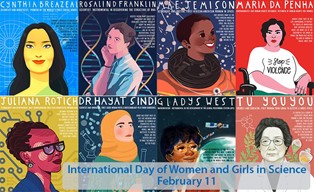
Source:
Image source:
Anti- Doxxing
- Context: Meta’s oversight board had recently suggested Facebook and Instagram to make strict Anti-doxxing rules.
- Doxxing refers to publishing and analysing others' personal information on the internet with a malicious intent.
- It can reveal the person's real identity making them victims of harassments and cyber-attacks.
- Doxxing attacks always occurs in two stages:
- Collection: The attackers gather all of the victim’s available information such as private addresses as well as email addresses, telephone numbers, social media accounts, private photos, bank data etc.
- Publication: The collected information is now published and dispersed as widely as possible. Often, publication is associated with threats.
- Doxxing, thus often results in emotional distress, loss of employment and even physical harm or death.

Source:
Image source:
White-bellied heron
- Context: White-bellied heron has been recently spotted in the Kamlang Tiger Reserve in Lohit district of Arunachal Pradesh.
- White bellied Heron (Ardea insignis) is a species of large heron known to inhabit the foothills of the eastern Himalayan region of India and Bhutan to Northeastern Bangladesh and Myanmar.
- It is dark-greyish in colour characterized by contrasting white throat, belly and vent, white-streaked scapulars, fore neck and upper breast.
- Both females and males have two lace-like white plumes on the back of their neck and are generally solitary.
- The species is mainly found near small or large rivers, usually with sand or gravel bars, adjacent to the subtropical or tropical broadleaved forest and also in lowlands and lakes near wet grasslands.
- Loss and degradation of lowland forests and wetlands, habitat fragmentation are leading to their rapidly declining population.
- It is categorised as critically endangered in the IUCN Red List.
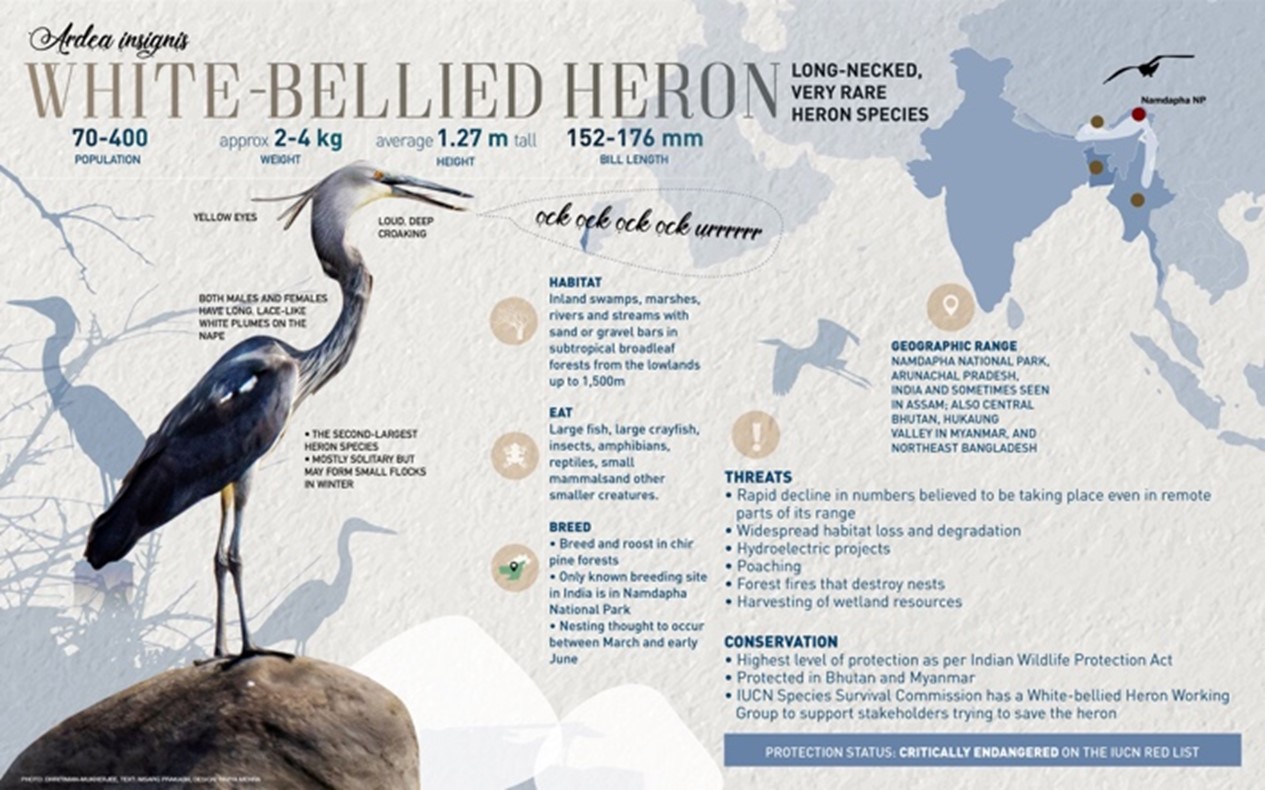
Source:
Image source:
World Food Programme (WFP)
- Context: India has recently signed a MoU to hand over wheat to the World Food Programme in Kandahar.
- The agreement is with respect to distribution of 50,000 MT of wheat to Afghanistan that India has committed as part of its humanitarian assistance.
- The World Food Programme (WFP) is the leading humanitarian organization that focuses on saving and changing lives, delivering food assistance in emergencies and working with communities to improve nutrition and build resilience.
- The organization concentrates majorly in conflict-affected countrieswhere people are three times more likely to be undernourished than those living in countries without conflict.
- WFP is governed by a 36-member Executive Board.
- It works in close association with its two Rome-based sister organizations, the Food and Agriculture Organisation (FAO)and the International Fund for Agricultural Development.
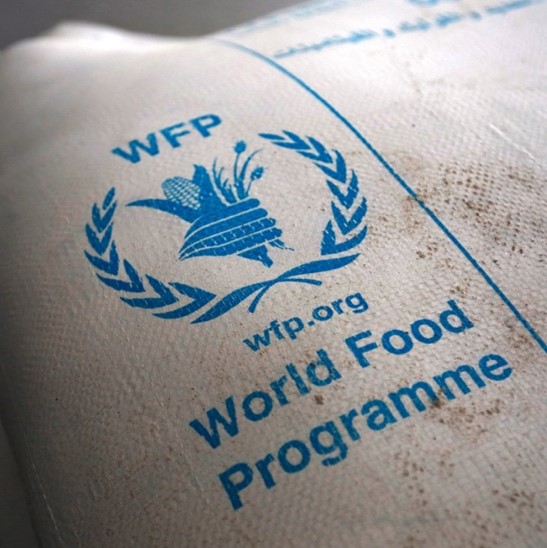
Source:
Image source:
Significance of the Indo-Pacific for India: IE
Essence: The editorial points to the two-pronged approach of strengthening trade ties and military exports in enabling greater Indo-Pacific partnerships. The idea behind this ground level work is strengthening national engagements and build stronger partnerships with like-minded nations. India and nations around the world have absolved their belief of holding alliances with ideological pursuits and focused on coalition, alliances and national interests.
USA has stopped demanding obligations from such alliances and so have other nations. The USA’s recently released Indo-Pacific Strategy document talks of free and open, connected, prosperous, secure, resilient Indo-Pacific and talks of unprecedented cooperation between like-minded nations. A stronger India as a leader of South Asia could cater and deliver as an important ally. In this regard, US’s focus on India is special but not exclusive. It could seek support of other nations and mini-lateral organizations for networked regional architecture (flexible groupings, collective strength, etc).
Thus, India has started working rigorously on trade and security front. Atmanirbhar Bharat and PLI schemes are steps in the same direction. India has also initiated fast track FTAs with various partners- UAE, Israel, UK, EU, etc. towards promoting international trade.
Why should you read this article?
- To understand India’s approach to Indo-Pacific region.
- To know the flexibility in alliances that countries around the world have adopted for promoting national interest.
Source:
The myth of the trickle-down: IE
Essence: Economists' comments on the budget help to explain the state of the Indian economy. They also reflect ideological divides about how an economy's health should be judged and what should be done to enhance it. The economic policy model of raising the total size of the pie by lowering taxes at the top and then "redistributing" the money has not given advantages to people, according to evidence from throughout the world. With laws to make it easier for investors to perform their business of creating greater riches for themselves, trickle-down has dried up while gushing up has expanded. The Indian economy has a long-standing "demand-side" issue that is exacerbated by faulty economic policies. There is a backlash to the financial globalisation over the last 30 years all across the world. With regressive tax policy and deregulation, wealth has risen at the top, and the global economy must move on from hyper-financial, unregulated capitalism, which has given cheap money too much freedom. Religious and caste-based political divides are ripping India's social fabric apart once more. To be repaired, India's economy must expand inclusively. It must compensate for human development gaps and create local industrial capacities in order to flourish. Until then, it will remain a colony for stronger nations to grow their intellectual property-based businesses.
Why should you read this article?
- To gauge the ideological disagreements on the health of an economy and the prescriptions to enhance it, economists should be consulted.
- To comprehend how the trickle-down effect has dwindled and how rising inequality affects national identity politics.
- To comprehend how religious and caste-based political divisions are ripping India's social fabric apart, as well as possible solutions.
Source:
Is it time to do away with the essential religious practices doctrine?: HT
Essence: Controversy over right to wear Hijab has brought to focus the larger picture of religious freedom in India. In India the right to religious freedom is a fundamental right but it is restricted by the Supreme Court’s essential religious practices doctrine. The essential practices framework emerges from one of the most basic forms through which modern politics regulates and organises the diversity it is willing to tolerate. The essential practices doctrine is a legal framework that facilitates the accommodation and toleration of religious freedom albeit only when presented as doctrinal truth.
The author expresses that the essential practice doctrine ought to be brushed aside for a presumptive recognition of all forms of individual freedom unless the state can supply reasonable grounds for the restriction of freedom. However, this is also an opportunity to revisit and re-think the divisive and limiting frames that essential practices casts on contemporary constitutional imagination.
Why should you read this article?
- To understand critique of Essential religious practices doctrine.
- To understand the religious rights in India and its basis
Source:
Blazing the flame of a Kalarippayattu
Background
The 92 year old Padma Shri awardee Sankaranarayana Menon of Kerala is working towards keeping the flame of kalarippayattu martial art alive with his dedication and love for it.
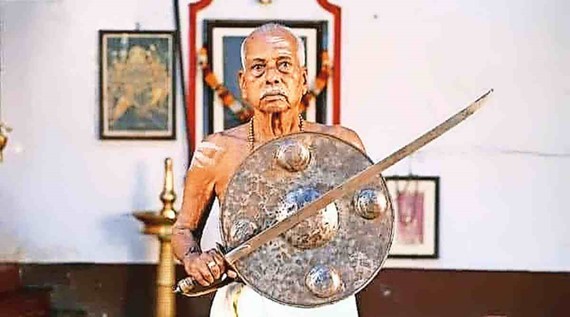
How are the traditional values helping to keep the art form alive?
- Menon has been into martial arts since the age of seven and has practised under the royal patronage as well.
- Though the advent of British reduced the number of practitioners, but Sankaranarayana Menon received royal patronage and survived the times.
- Later, he opened a school teaching the natural form of art. But, modern martial art forms such as karate and kung-fu started becoming popular in the state, and kalarippayattu lost its reach and resonance.
- But, globalisation opened new vistas for the school and helped Menon and his sons to open up schools outside India too.
- Even after all the praises and awards, Menon stays humble to the art and teaches whoever knocks his door.
Quote:
Satisfaction lies in the effort, not in the attainment. ~ Mahatma Gandhi
Source:
Share the article
Get Latest Updates on Offers, Event dates, and free Mentorship sessions.

Get in touch with our Expert Academic Counsellors 👋
FAQs
UPSC Daily Current Affairs focuses on learning current events on a daily basis. An aspirant needs to study regular and updated information about current events, news, and relevant topics that are important for UPSC aspirants. It covers national and international affairs, government policies, socio-economic issues, science and technology advancements, and more.
UPSC Daily Current Affairs provides aspirants with a concise and comprehensive overview of the latest happenings and developments across various fields. It helps aspirants stay updated with current affairs and provides them with valuable insights and analysis, which are essential for answering questions in the UPSC examinations. It enhances their knowledge, analytical skills, and ability to connect current affairs with the UPSC syllabus.
UPSC Daily Current Affairs covers a wide range of topics, including politics, economics, science and technology, environment, social issues, governance, international relations, and more. It offers news summaries, in-depth analyses, editorials, opinion pieces, and relevant study materials. It also provides practice questions and quizzes to help aspirants test their understanding of current affairs.
Edukemy's UPSC Daily Current Affairs can be accessed through:
- UPSC Daily Current Affairs can be accessed through Current Affairs tab at the top of the Main Page of Edukemy.
- Edukemy Mobile app: The Daily Current Affairs can also be access through Edukemy Mobile App.
- Social media: Follow Edukemy’s official social media accounts or pages that provide UPSC Daily Current Affairs updates, including Facebook, Twitter, or Telegram channels.



